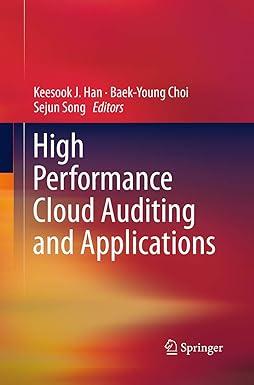Question
CRITICAL THINKING: The article on the next page addresses a key issue archived on the web site of the National Association of Insurance Commissioners (NAIC).
CRITICAL THINKING: The article on the next page addresses a key issue archived on the web site of the National Association of Insurance Commissioners (NAIC). Longevity risk exists due to the increasing life expectancy trends among policy holders and pensioners, and can result in payout levels that are higher than what a company or fund originally accounts for, and there are even academic/industry meetings centered around longevity risk.
a. What are the consequences, negative and/or positive, of increasing life expectancy for life insurance products?
b. What are the consequences, negative and/or positive, of increasing life expectancy for annuity products?
c. How should life insurance companies respond and plan for this continuing trend?
LONGEVITY RISK Archived Key Issue
The need to manage longevity risk has come to the forefront as employers and individuals increasingly become aware of their exposure to longevity risk and their need to mitigate it. Longevity risk refers to the risk that actual survival rates and life expectancy will exceed expectations or pricing assumptions, resulting in greater-than-anticipated retirement cash flow needs. For individuals, longevity risk is the risk of outliving ones assets, resulting in a lower standard of living, reduced care, or a return to employment. For those institutions providing covered individuals with guaranteed retirement income, longevity risk is the risk of underestimating survival rates, resulting in increased liabilities to sufficiently cover promised payments. Institutions facing longevity risk include defined benefit pension plan providers, (re)insurance companies, and certain financial institutions. Key drivers of the growing need to address longevity risk include an aging population, increasing life expectancy, a shift in who bears the responsibility of sufficient retirement income, uncertainty of government benefits and economic volatility. It is estimated those reaching retirement age will more than double from 2010 to 2050, jumping from an estimated 40.2 million to 88 million people. At the same time that a growing proportion of the population is reaching retirement age, it is also living longer. According to the Census Bureau, the U.S. average life expectancy at birth increased 62% from 47.3 years in 1902 to 76.8 in 2000, with expectations it will reach 79.5 in 2020. For defined benefit plans, who are already facing pension funding deficits, the recognition of this increasing longevity places greater strain on liability funding needs. For individuals, the increase in longevity combined with the uncertainty of government benefits and departure of defined benefit plans leaves them more accountable for ensuring their own retirement income.
Step by Step Solution
There are 3 Steps involved in it
Step: 1

Get Instant Access to Expert-Tailored Solutions
See step-by-step solutions with expert insights and AI powered tools for academic success
Step: 2

Step: 3

Ace Your Homework with AI
Get the answers you need in no time with our AI-driven, step-by-step assistance
Get Started


